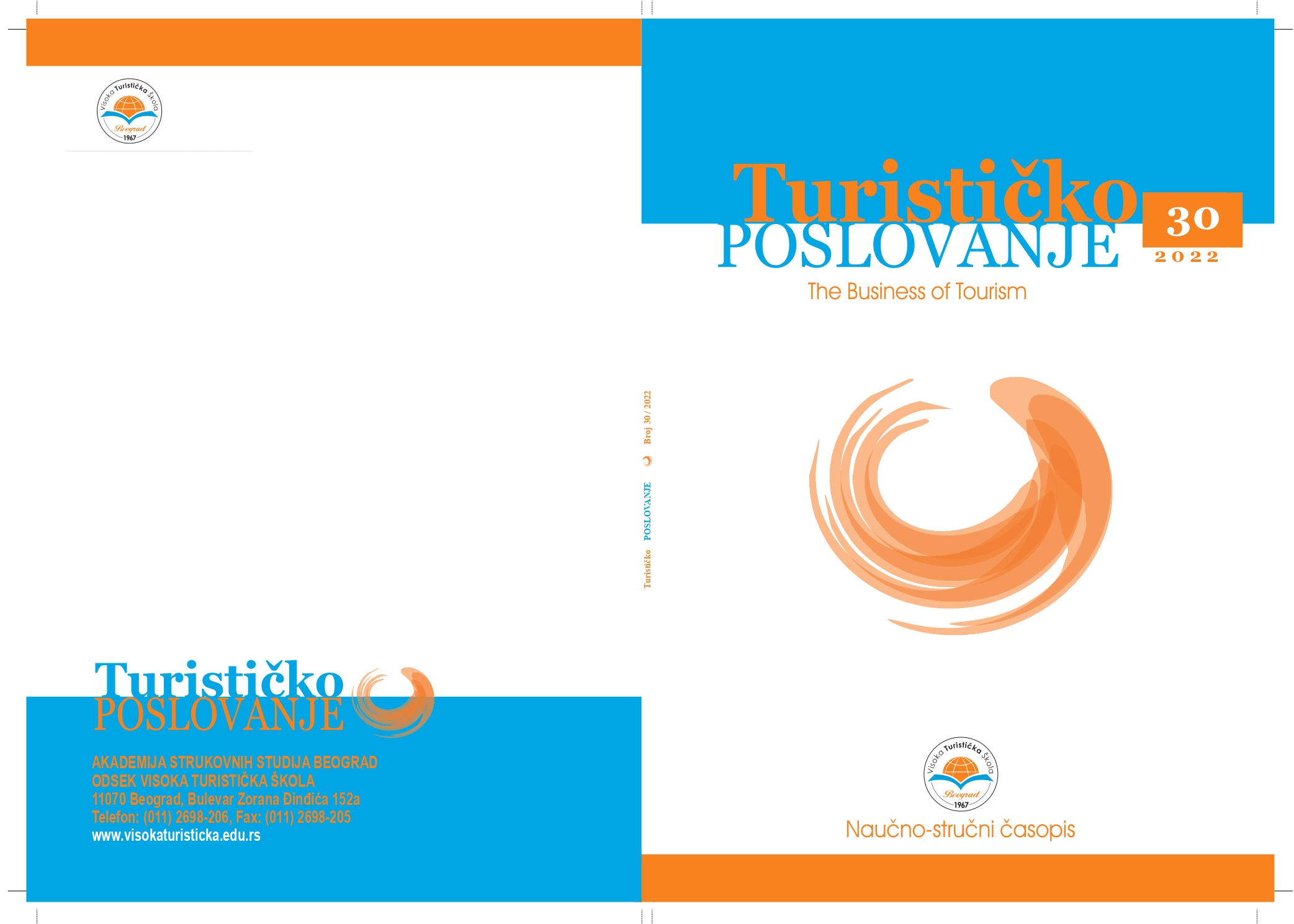ОСОБИНЕ ТРАДИЦИОНАЛНИХ ПРЕХРАМБЕНИХ ПРОИЗВОДА КАО ПРЕДИКТОР ПОТРОШЊЕ У УГОСТИТЕЉСТВУ – НА ПРИМЕРУ ОДАБРАНИХ ОБЛАСТИ У ВОЈВОДИНИ
Sažetak
Традиционални прехрамбени производи чине веома важан сегмент угоститељско-туристичке понуде. Они утичу на стварање слике о одређеној држави или регији у свести потрошача. Унапређење и повећање потрошње традиционалних прехамбених производа и њихова већа заступљеност у понуди угоститељских објеката, може имати мулипликативан ефекат на већи број делатности, а пре свега на произвођаче тих производа, који обично спадају у групу малих и средњих произвођача. Предмет рада чине традиционални прехрамбени производи, односно важност њихових особина посматрано из угла запослених на менаџерским функцијама у угоститељским објектима у Срему и Северној Бачкој. Основни задатак овог рада је да прикаже ставове менаџерског особља угоститељских објекта у Срему и Северној Бачкој према квалитетима традиционалних прехрамбених производа (тржишним, производним и техничким особинама) који утичу на избор куповине. Основни циљ овог рада је прикупљање података о традиционалним прехрамбеним производима који се користе у припреми оброка у угоститељским објектима у окружењу и чије су карактеристике кључне за њихов избор.
Reference
· Almli, V.L., Verbeke, W., Vanhonacker, F., Næs, T., Hersleth, M. (2011). General image and attribute perceptions of traditional food in six european countries. Food Quality Preference 22 (1), 129_138.
· Anders, S.M., Caswell, J.A., (2009). The benefits and costs of proliferation of geographical labeling for developing countries. The Estey Centre Journal of International Law and Trade Policy 10 (1), 77-93
· Aprile, M.C.; Caputo, V.; Nayga Jr, R.M. (2012). Consumers' valuation of food quality labels: the case of the European geographic indication and organic farming labels. International Journal of Consumer Studies, 36, 158-165.
· Anastasiadis, F.; Apostolidou, I.; Michailidis, A. (2021). Food traceability: a consumer-centric supply chain approach on sustainable tomato. Foods, 10, 543.
· Caputo, V., Sacchi, G., Lagoudakis, A. (2018). Traditional Food Products and Consumer Choices: A Review. In Case Studies in the Traditional Food Sector; Cavicchi, A., Santini, C., Eds.; Woodhead Publishing: Sawston, UK.
· Cayot, N. (2007). Sensory quality of traditional foods. Food Chemistry, 101(1), 154–162.
· Chambers IV, E. (2019). Analysis of sensory properties in foods: A special issue. Foods, 8, 291
· Curtis, K.R.; Cowee, M. W. (2009). Direct marketing local food to chefs: Chef preferences and perceived obstacles. Journal of food distribution research, 40, 26-36.
· Dević-Blanuša J.; Kalenjuk B.; Gagić S. (2017). Organic food in the hospitality industry: Supply and demand. Zbornik radova Departmana za geografiju, turizam i hotelijerstvo, 46, 89-95.
· Escobar-López, S.Y.; Espinoza-Ortega, A.; Vizcarra-Bordi, I.; Thomé-Ortiz, H. (2017). The consumer of food products in organic markets of central Mexico. British Food Journal, 119, 558-574.
· Frash Jr, R.E.; DiPietro, R.; Smith, W. (2015). Pay more for McLocal? Examining motivators for willingness to pay for local food in a chain restaurant setting. Journal of Hospitality Marketing & Management, 24, 411-434
· Fusté-Forné, F. (2019). Seasonality in food tourism: wild foods in peripheral areas. Tourism Geographies, 1-21.
· Gellynck, X.; Kühne, B. (2010). Horizontal and vertical networks for innovation in the traditional food sector. International Journal on Food System Dynamics. 2010, 1, 123 132.
· Groves, A.M. (2001). Authentic British food products: A review of consumer perceptions. International Journal of Consumer Studies, 25, 246-254.
· Grubor, B., Kalenjuk Pivarski, B.,Ðerčan, B.,Tešanović, D.,Banjac, M.,Lukić, T.;,Živković, M.B., Udovičić, D.I., Šmugović, S., Ivanović, V., Ćirić, M., Ćirić, I. (2022). Traditional and Authentic Food of Ethnic Groups of Vojvodina (Northern Serbia)— Preservation and Potential for Tourism Development. Sustainability, 14, 1805.https://doi.org/10.3390/su14031805.
· Guerrero, L.; Guardia, M.D.; Xicola, J.; Verbeke, W.; Vanhonacker, F.; Zakowska, S., et al. (2009). Consumer-driven definition of traditional food products and innovation in traditional foods. A qualitative cross-cultural study. Appetite, 52, 345–354
· Gupta, K.B. Consumer behaviour for food products in India. In 19th Annual World Symposium of the Indian Institute of Management, Bombay, India, June 2009, 20-21.
· Kalenjuk, B.; Cvetković, B.; Dević-Blanuša, J. (2017). Autentična hrana ruralnih područja Vojvodine i značaj za razvoj gastronomskog turizma. Turističko poslovanje, 20, 27-35.
· Kalenjuk B.; Grubor B.; Đerčan B.; Ivanović V. (2022). Independent food production as immediate gastronomical authenticity of the region of importance for the development of tourism in Vojvodina. Turističko poslovanje, 29, 61-72.
· Nijssen, E.J.; Van Trijp, H.C. (1998). Branding fresh food products: exploratory empirical evidence from the Netherlands. European review of agricultural economics. 1998, 25, 228-242.
· Tsai, C.T., Wang, Y.C. (2017). Experiential value in branding food tourism. J. Destin. Mark. Manag. 6, 56–65.
· Urry, J. (1990). The Tourist Gaze: Leisure and Travel in Contemporary Societies. Sage,London.

